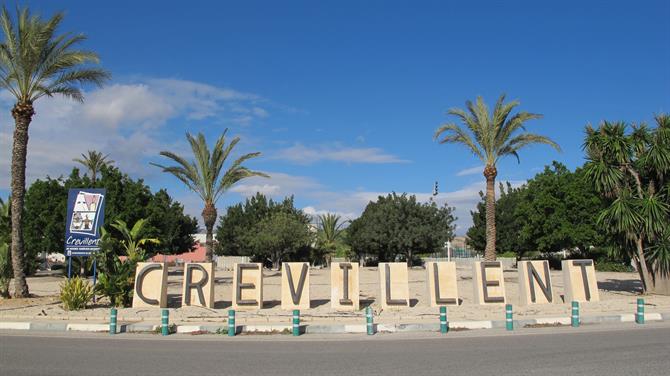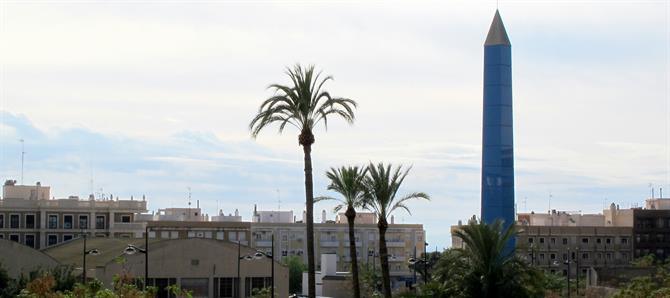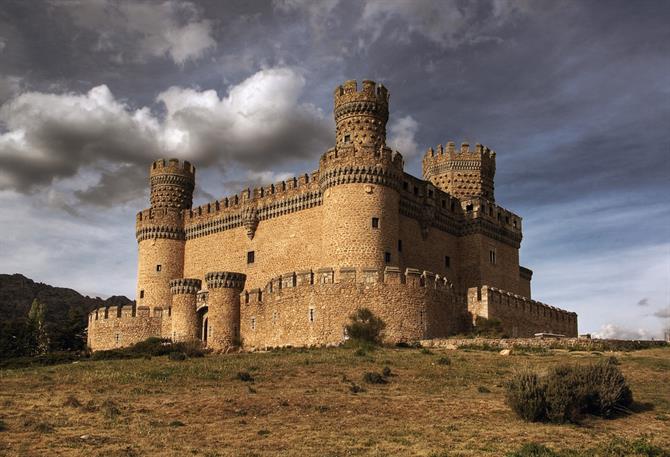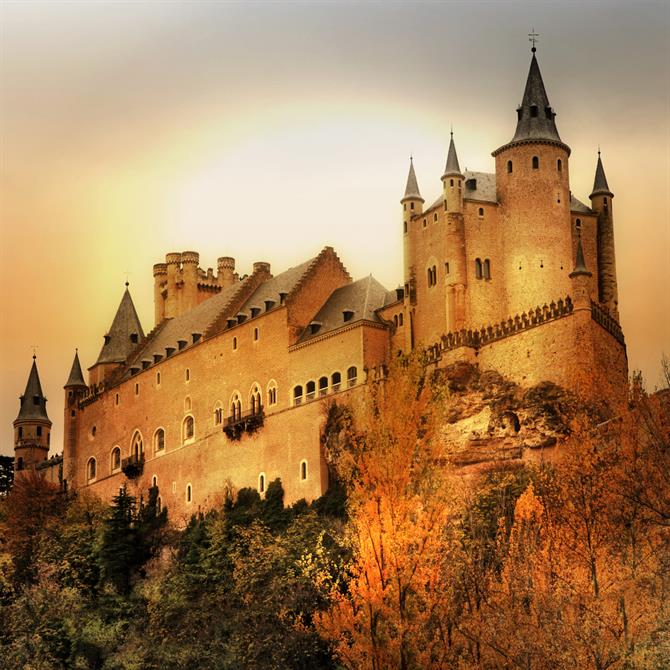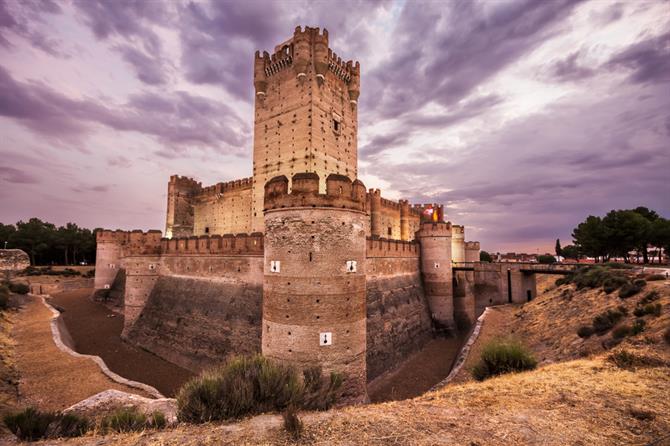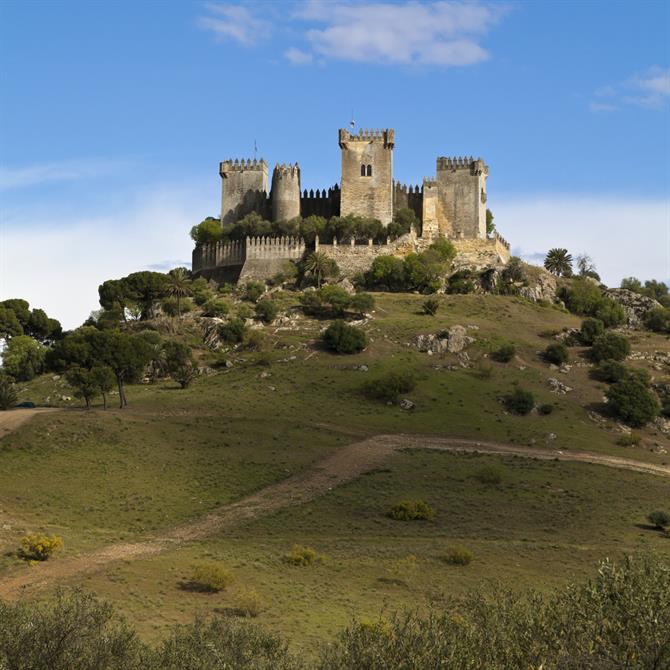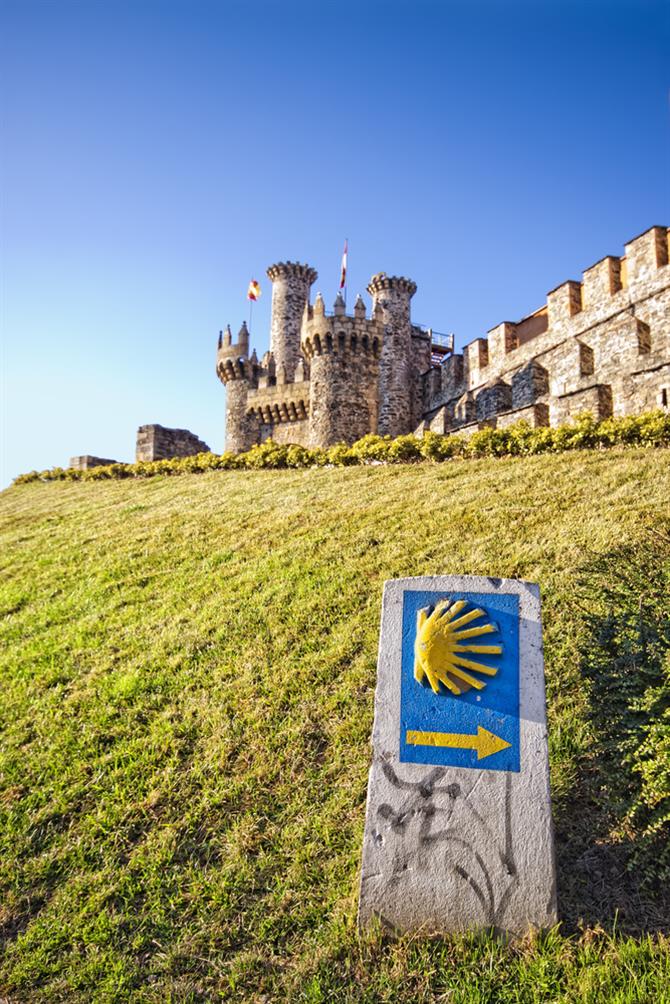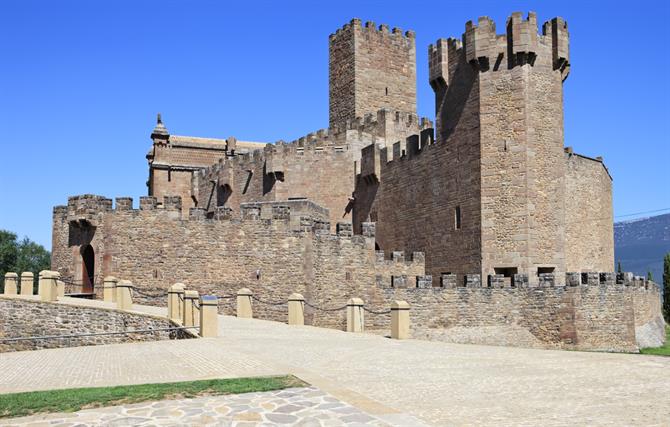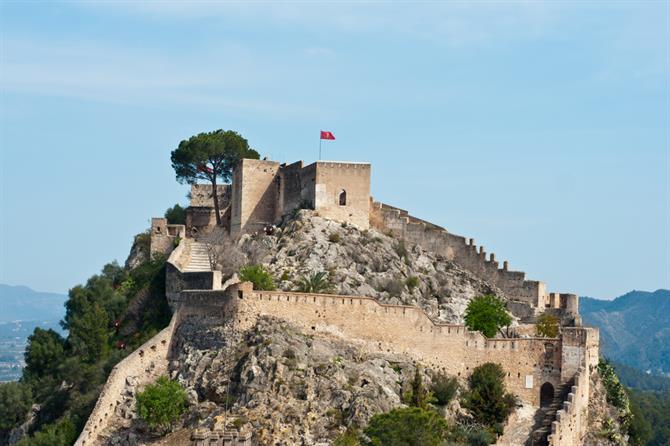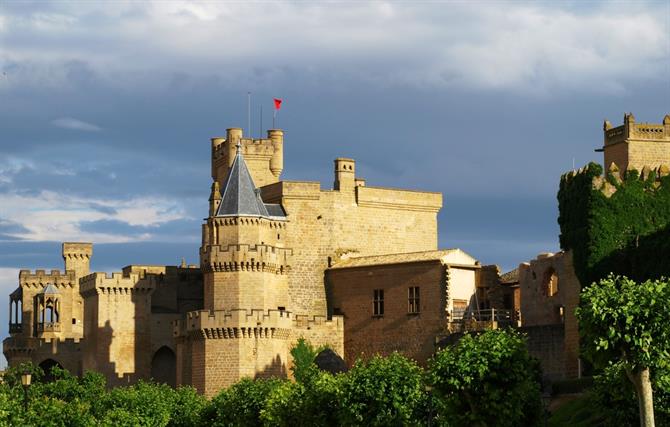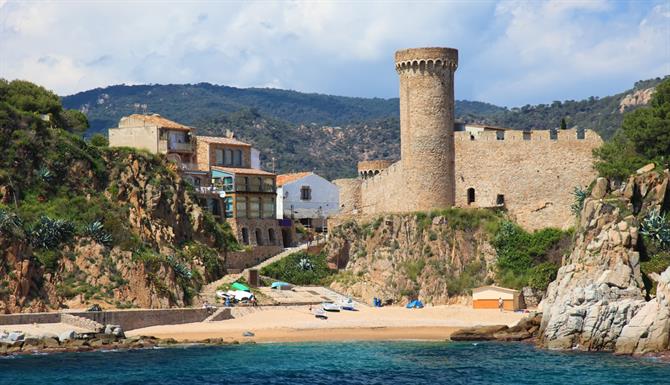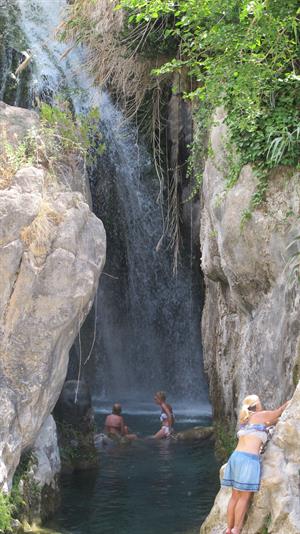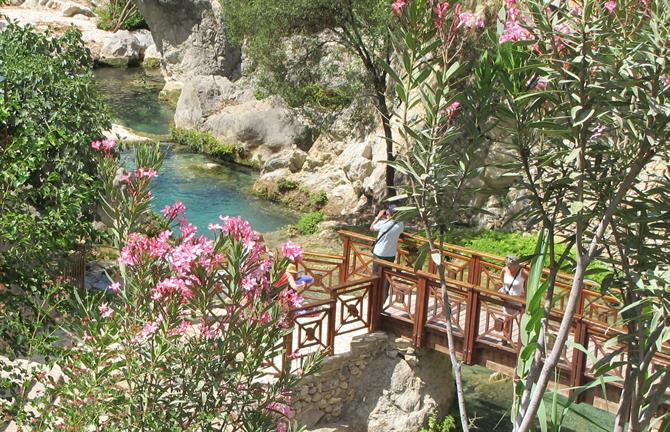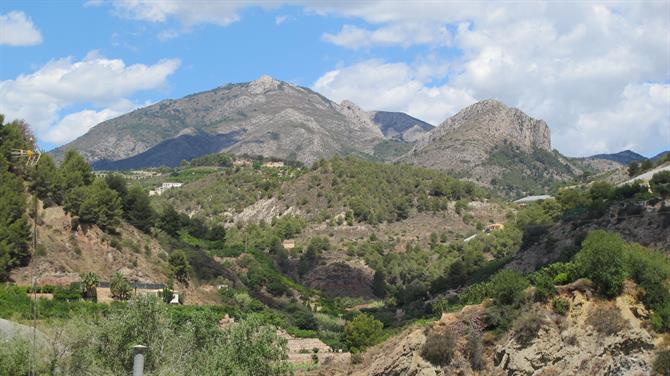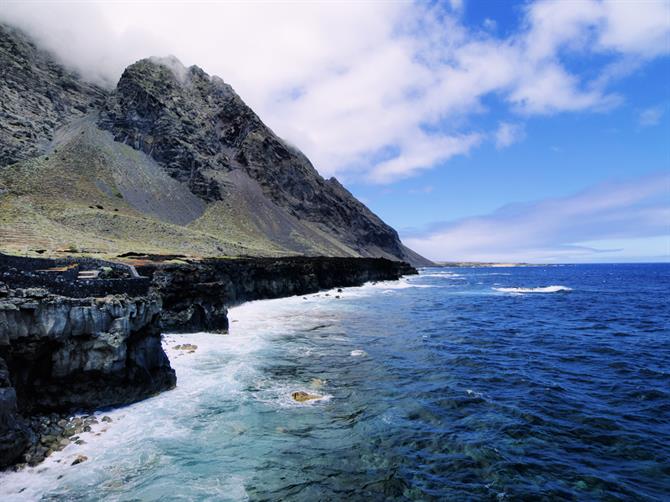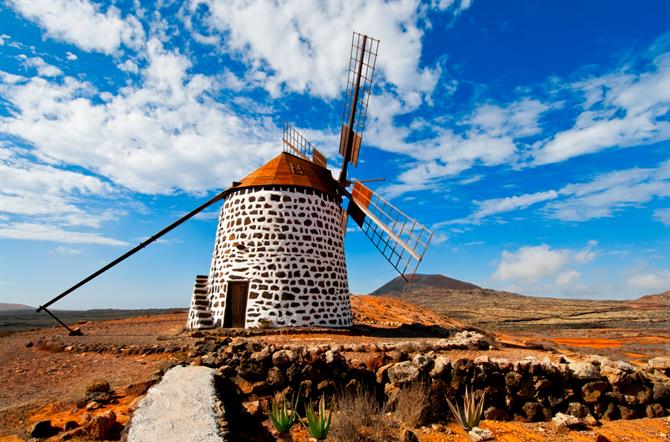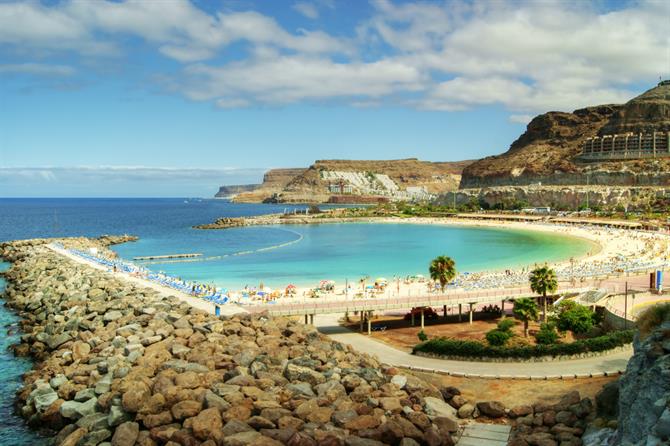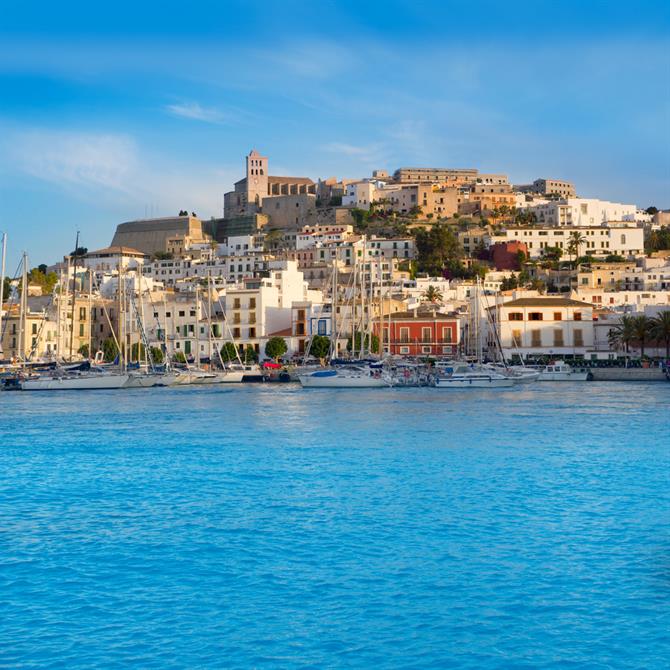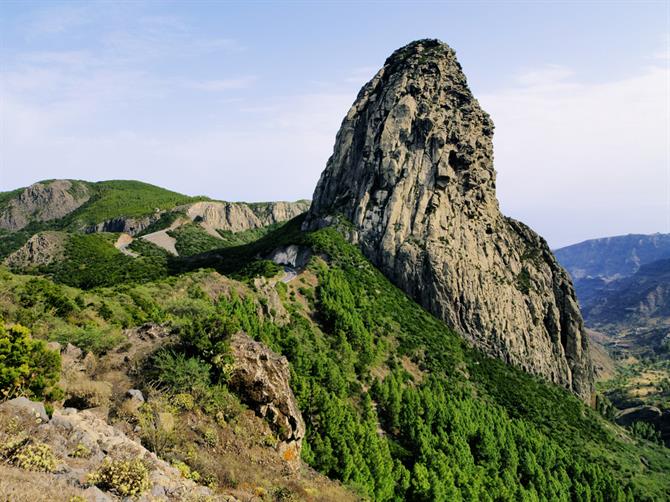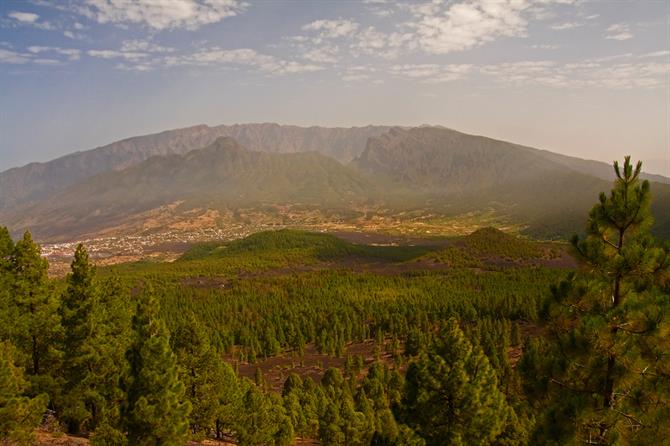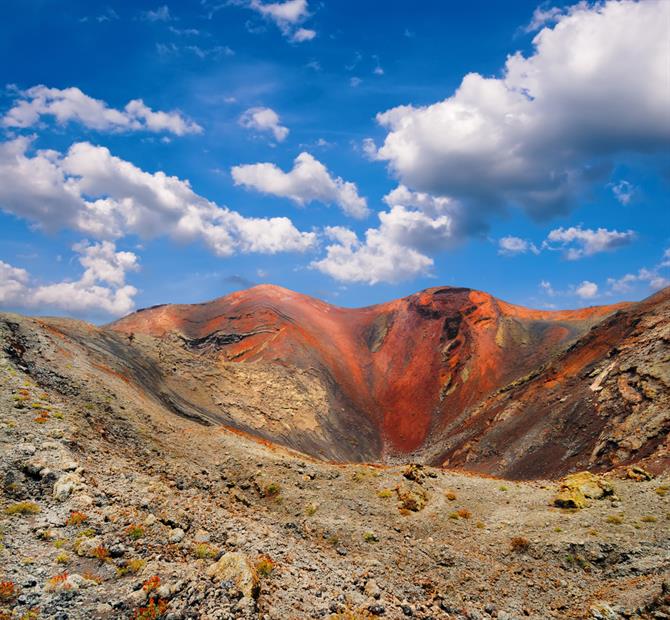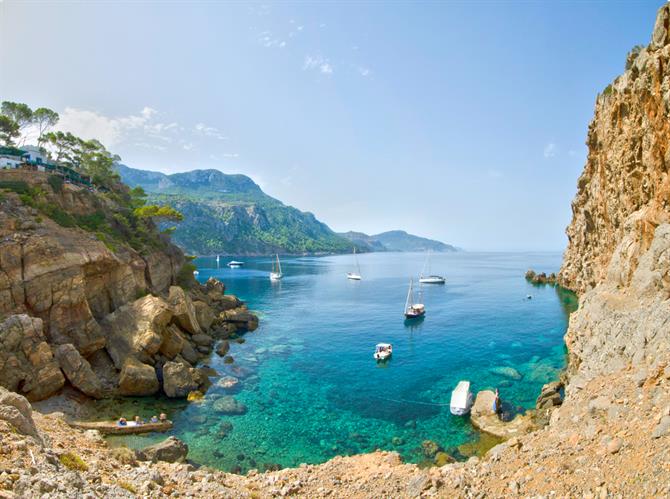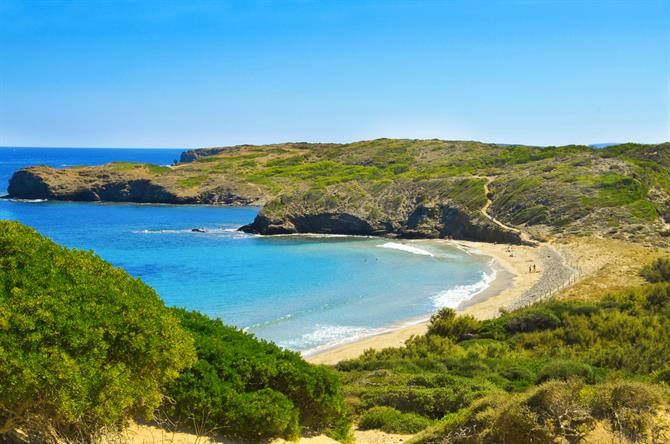Malaga – the birthplace of the eccentric artist Pablo Picasso – has been experiencing a real growth both economically and culturally. Up until quite recently the city of Malaga was not that popular, with visitors tending to pass it by on their way to other destinations. These days though, we see many tourists arriving to enjoy a city break in Malaga.
Malaga is known as the capital of the Costa del Sol and is one of those points on the map which appears every year on some list of places where quality of life is the highest. You can enjoy many hours in the sun and sea and besides that, the mountains surrounding this city make this destination complete.
Malaga wins additional points for its rich history (which goes back for more than 3000 years), excellent food at good prices and extremely friendly people. The fact that all points of interest are concentrated in the city’s historic centre where most streets are pedestrianised and the fact that the city itself is not mountainous, makes it the perfect destination to be discovered by bike. You’ll see when you get here that bikes are pretty much dominating the streets of Malaga nowadays.
Bike Tour Malaga
We have prepared a guide for those who want to explore Malaga by bike, get to know the most important parts of the city and to see the most emblematic monuments in just a few hours.
1. La Plaza de la Marina
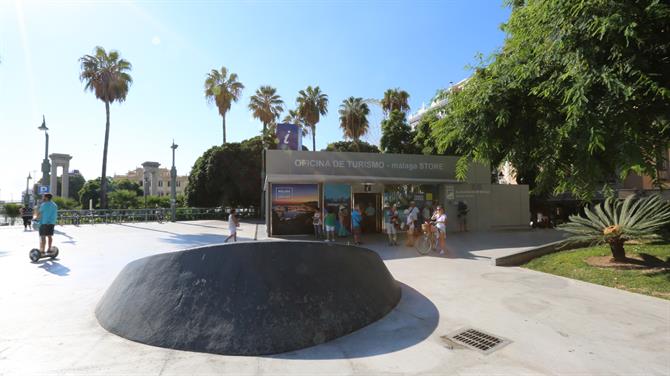
Plaza de la Marina, Malaga
The first stop is the Plaza de la Marina, one of the most important and centrally located squares in Malaga. Your trip should start here for several reasons – firstly, in the area there are several bike rental shops, where you can rent a bike for a few hours or even for several days (the price for one day is about 10 euros).
Besides that, it is also home to the main Tourist Information Office, which is worth a look as here you’ll find out about anything going on city plus any offers or free entry. This square is also the entrance to the harbour, and it is located just off the main avenue of the city – Alameda Principal, it also leads directly to the green centre of Malaga – El Parque de Malaga.
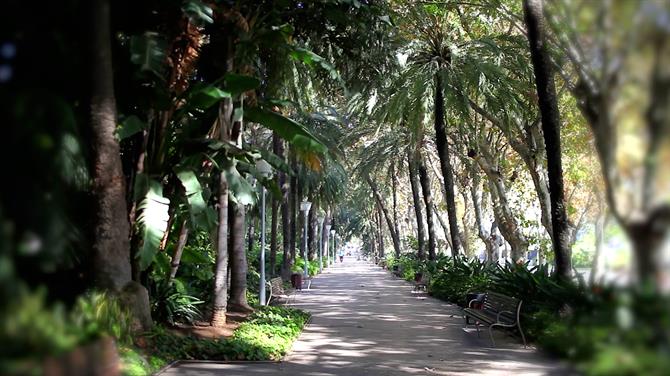
Malaga park, El Parque de Malaga
In the centre of the square there is a fountain and at the edge looking out over the harbour is one of the most characteristic monuments of the city – “El Cenachero” – a statue of a fisherman carrying two baskets of fresh fish. Years ago, this was a very common sight on the streets of Malaga and today acts one of the most important symbols of the city.
The creator of the statue, Jaime Fernandez Pimentel, actually based it on a real person; a local fisherman named Manolo who was also known as “El Petaca”.
2. El Parque de Malaga
Parque de Malaga, Malaga
When you cross the street you will find yourself cycling in El Parque de Malaga or Malaga Park. This is one of the biggest and most famous parks in the city and is exhibits one of the largest collections of tropical flora in Europe. It separates the harbour from the city centre, and is home to many exotic plants and huge flocks of tiny coloured parrots, which you will hear singing in the early morning.
The design of the park was created in the 1870s and although the inauguration of the park project was held in 1899, the completion of the work lasted until 1921. Since then, the park has undergone several renovations, but its original shape has been maintained. Among the palm trees, ivy and countless plant species you’ll find a water pond, a playground, a kiosk and an amphitheatre which regularly hosts shows and events.

Malaga park, El Parque de Malaga
Additionally, the park is spotted sporadically with statues and sculptures by Spanish artists such as Ruben Darío and Salvador Rueda. For the younger generation, in the playground at the centre of the park you will find one of the most famous monuments in Malaga, the cute little donkey “Platero”, who is the hero of the book “Platero y yo” written by Andalusia’s J.R. Jimenez.
3. La Plaza de Toros, La Malagueta
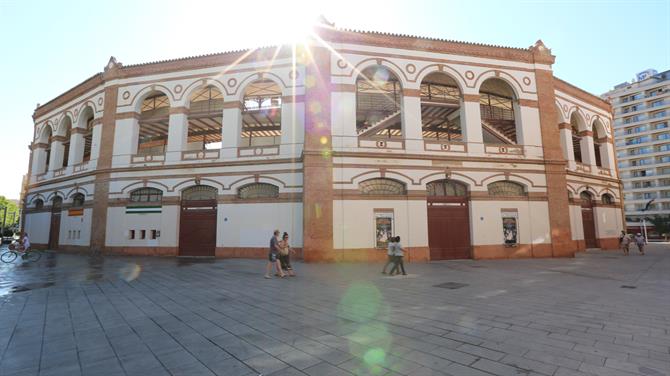
Plaza de Toros La Malagueta, Malaga
The “Plaza de Toros” or bullring, is an emblematic sight which you can find in the majority of Andalusian cities and Malaga is no exception. The building is eye-catching and impressive from the outside but the main arena inside, which is filled with golden sand and flanked on each side with towering stands that can hold slightly more than nine thousand viewers, will impress you. Entry to the building plus the museum costs 1.80€ per person.

View of Plaza de Toros from above
The Plaza de Toros was built in 1874 and designed by Joaquín Rucobę who was the chief architect of the city of Malaga, the same architect who worked on the plans for the Parque de Malaga and the local market – Mercado de Atarazanas.
The building is characterised by the Neo-Mudéjar style, which was popular in architecture during the nineteenth and twentieth centuries and references Andalusia’s Arabic roots. Today, this place is considered to be historical heritage of Spain. Several times a year bullfights are held here, but the arena is also used as a place to hold fairs and concerts.
4. La Malagueta Beach and Paseo Maritimo
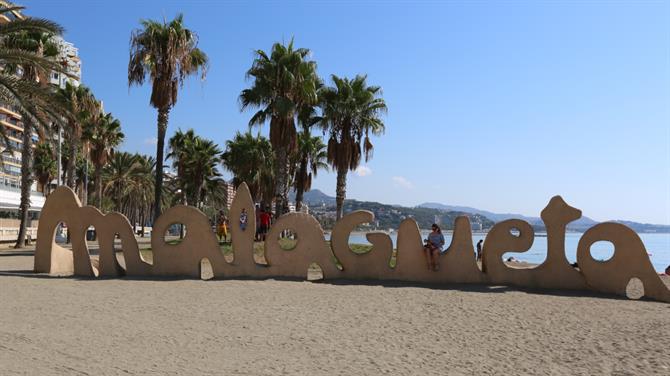
Playa de la Malagueta, Malaga
La Malagueta is the most famous beach in the city. It is located just a few steps away from the city centre and the new harbour, Muelle Uno. There are about 1200 metres of sand and here you will find both local residents and tourists spending a lazy day in the sun, enjoying a picnic or bathing in the sea. You can get to La Malagueta directly from the Paseo Marítimo which is the seaside promenade. The promenade starts in the port and runs along the entire length of the beach to the fashionable neighbourhood of Pedregalejo and the old fishing district of El Palo.
Sardinas
The Malagueta beach and its promenade are the perfect places to try some local specialities. On the promenade along the beach you will find lots of restaurants or chiringuitos serving fresh fish, seafood and excellent paellas. Be sure to try one the dishes that are typical to the province of Malaga – pescaito frito (deep fried fish) and espetos de sardinas (grilled sardines on a stick). After your snack, enjoy a siesta in the shade of the palm trees or continue your cycling tour.
5. Muelle Uno and Muelle Dos
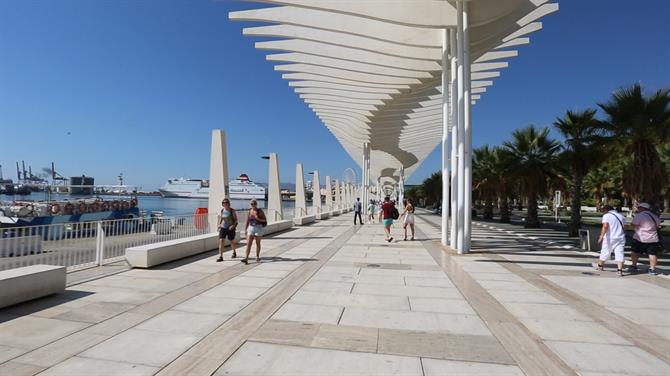
Muelle Uno, Malaga
The construction of the new port was planned to be finished long before it was actually completed but since 2011, residents as well as tourists have a new place to spend some time by the water. Muelle Uno is the part of the port extending from the snow-white lighthouse up to the Pompidou Centre. Here, you’ll find plenty of shops, restaurants and cafes where you can enjoy a refreshing drink or spend a romantic evening with views of the harbour, the castle, the cathedral and the slowly rotating Ferris wheel, all illuminated in the distance.
In the port you will find the only restaurant in Malaga that has been awarded a Michelin star – Restaurante Jose Carlos Garcia. The coloured cube of the Pompidou Centre – a contemporary art museum – matches perfectly with the fancy surroundings.
Centre Pompidou Málaga
Muelle Dos is an extension of the first pier. It’s a long promenade featuring a towering, modernist structure which creates a long shadow over the walkers, providing welcome relief on hot Malaga days. This part of the promenade is called the Palmeral de las Sorpresas which means Palm Garden of Surprises and offers plenty of entertainment. There are numerous gardens and children’s playgrounds, several water features and a variety of activities which provide hours of fun in Muelle Dos.
The whole complex is very modern and elegant. Along the path there are approximately 420 palm trees and in the surrounding gardens you can find a total of around 7400 trees and tropical plants.
6. The Gardens of Pedro Luis Alonso and Views over the Gibralfaro
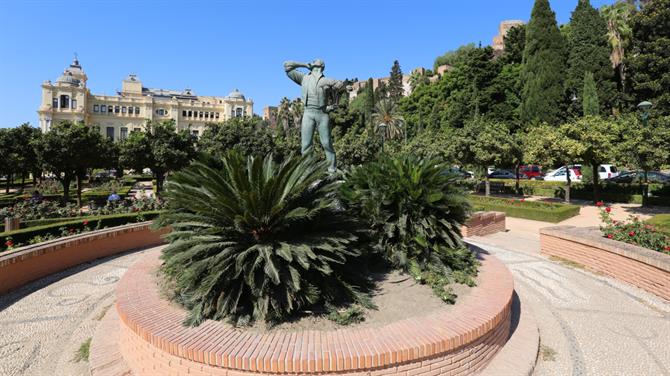
Jardines Pedro Luis Alonso, Malaga
Even though these gardens lie in the central part of Malaga next to the town hall building, they are often overlooked when visiting the city. The park was created in 1947 and was designed by the renowned Malaga architect Fernando Guerrero Strachan. It owes its name to the first mayor of Malaga after the Spanish Civil war; Pedro Luis Alonso.
The geometric pattern, which is typical of French gardens does not really have much in common with a typical Andalusian patio. The vegetation consists mainly of mandarins and orange trees and also the Azahar flower, which has a wonderful scent especially in spring (late March and early April). There are also a number of different rose species which bloom at different times of year, meaning that no matter when you visit the park, you will always be surrounded by a delicious floral scent.
Malaga Park
The focal point of the garden is a statue depicting a “Biznaga” seller – El Biznaguero. The Biznaga is a handcrafted flower made of jasmine blossoms and has a very strong aroma, it is one of the most important symbols of Malaga. The scent of the Biznaga is typical of hot August nights in the city, when the sellers “Los Biznagueros” walk through the streets and offer them to people. This statue was also created by Jaime Fernandez Pimentel, the same artist who created the fisherman, El Cenachero and the little donkey, Platero.
From the gardens, you will see the imposing Moorish fortress situated in the hills of the city and reminiscent of The Alhambra in Granada. Hidden between the trees along the hillside, you’ll see the viewpoint “Mirador Gibralfaro”, you can get there by climbing up a steep staircase and then a twisting path up the hillside. Your efforts will be rewarded with stunning views of the city and the sea. Further up the hill there is the castle El Castillo de Gibralfaro.
The castle is one of the oldest buildings in Malaga and dates back to Phoenician times, the invaders who settled on these lands nearly three thousand years ago. The Phoenicians utilised the potential of the hill and immediately constructed a fortress on top and for centuries, this fortress was considered one of the most impregnable strongholds on the Iberian Peninsula.
Gibralfaro Malaga

The name “Gibralfaro” derives from the Phoenician “Jbel-Faro” and means “the hill of the lighthouse”. Over the years, the castle changed through the hands of the Romans and then the Arabs and it served as a defence for the the Alcazaba Palace. During the Reconquista in 1487, the catholic King Ferdinand had to attack the castle for months before he was able to take it over.
Nowadays, the castle can be visited everyday from 9:00 to 20:00 (in summer) or 18:00 (in winter). The ticket price for adults is 2.20€.
7. The Alcazaba and The Roman Theatre
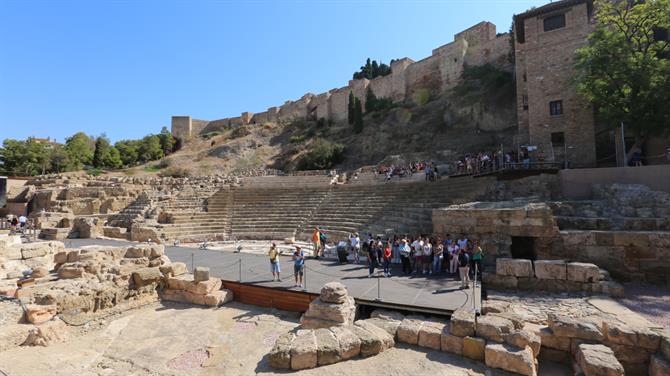
Teatro Romano, Alcazaba, Malaga
Only a few steps away from the rose garden, you will find two symbolic Malaga monuments: the Alcazaba Palace and lying at her feet, the Roman Theatre. If you take the street called Calle Alcazabilla you will arrive in the middle of a small square next to a glass pyramid which reveals ancient underground ruins beneath its windows.
The Roman Theatre dates back to the first century BC, when the Roman Empire was ruled by Caesar Augustus. It is hard to believe that the structure was only discovered in 1951 and renovated in 2011. During summer on Friday and Saturday nights, plays of the ancient classics are often performed here by local theatre groups.
A visit to the Roman Theatre is free, but keep in mind that on Mondays they are closed.

La Alcazaba de Málaga
Above the theatre, the view is majestically dominated by the red walls of the Alcazaba Palace which served for 1,487 years as a residence, and political and administrative centre. Even after the takeover of the city by the Catholic Monarchs, the complex continued to be of importance but after 1675 it began to fall into disrepair. This was a result of damage caused by wars, earthquakes, and even thieves stealing bricks to build their own homes nearby.
The palace even served as a hospital and military prison and during the early twentieth century, the homeless lived and slept in the abandoned palace walls. It was only in the 1930s that historical value was assigned to the structures and the decision was made to protect and renovate the palace.
Malaga Alcazaba
In the area next to the palace buildings, you can find some lovely gardens and typical Arab patios scented by orange and jasmine blossoms. The views of the port, bullring and Ferris wheel from the walls of the Alcazaba are priceless and a must-see.
Entry to the palace complex costs 2.20€ and on Sundays after 14:00 entry is free.
8. Plaza de la Merced and the Birthplace of Picasso

Plaza de la Merced, Malaga
Another important point on the map of Malaga is the Plaza de la Merced, this square owes its name to the church and the monastery of Our Lady of Mercy – Iglesia y Convento de Nuestra Señora de la Merced. This is one of the largest and most beautiful squares in the city and in its centre there is a huge obelisk dedicated to General Torrijos and his 48 companions who were murdered in 1831.
Casa Natal
On this square you will find the birthplace of one of the most popular artists of the late nineteenth and early twentieth century: Pablo Picasso. He was born in a building called Casas de Campos, which is now a museum called the Fundación Picasso Museo Casa Natal. In 2008, a statue of the painter was erected on the bench in front of this building.
Beeld Picasso Plaza de la Merced
Life has always flourished in this square. From the late Middle Ages this place served as a market, hence its name at that time was the Plaza del Mercado or Market Square. Later on in the nineteenth century, it became a meeting place for local aristocrats and artists and today, it is a popular gathering place of the local residents of Malaga.

In the afternoon, the cafes and bars fill up completely with both locals and tourists benefiting from the afternoon sun. The people are accompanied by hordes of pigeons, it’s easy to imagine the scene of the young Picasso looking out from his window and seeing the birds that inspired his creativity.
9. The Picasso Museum and Calle San Augustin
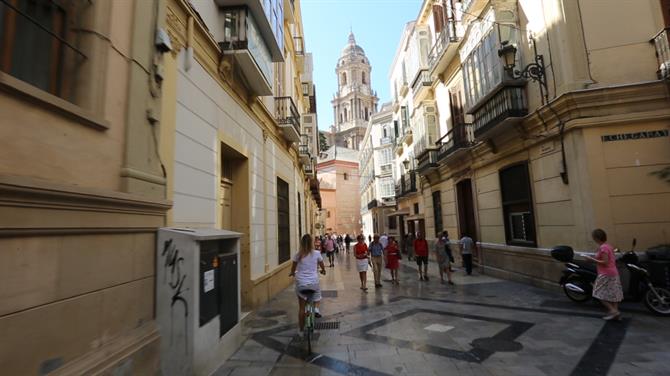
Calle San Augustin, Malaga
Following in the footsteps of Picasso, walk down Calle Granada to the church where he was baptised, the Iglesia de Santiago Apóstol. It is one of the four catholic churches existing within the city walls (in the Middle Ages Malaga was surrounded by a wall). This church was constructed during the Arab reign, which explains why a lot of the churches architectural details are in the Mudéjar style.
Picasso Museum
From this street, turn right to reach the narrow street called Calle San Agustin, one of the few streets that has preserved its traditional character, its name comes from the monastery of St. Augustine which was founded here in the sixteenth century. It’s also worth mentioning that after the Reconquista of Malaga, the King decided that a certain number of noble Muslim families were allowed to stay in the city. These families lived in a neighbourhood called La Moreia, close to the street of San Agustin and that is where the Muslim families had their mosque, stove and baths.
Picasso Museum Malaga
Another very important point on the map is the Picasso Museum, offering visitors 285 of his works in various techniques. An additional attraction is the location of the museum, which is housed in the Palace of the Counts of Buenavista (Palacio de los Condes de Buenavista), this is probably one of the most beautiful buildings in Malaga. Visitors are usually impressed when they walk through the interior patio, which is surrounded by rows of white columns.
Entry to the museum costs 10€ and includes entrance to temporary exhibitions.
Calle San Agustin often appears on postcards because it’s one of the best places to admire the cathedral, which is located at the end.
10. The Cathedral of Malaga

The Cathedral of Malaga
This landmark is quite difficult to miss, because the Cathedral of the Incarnation (Santa Iglesia Catedral Basilica de la Encarnación) is one of the tallest buildings in Malaga. Ferdinand of Aragon ordered the construction of the cathedral, after he captured the city in 1487 and the project of the building was taken on by the famous architect Diego de Siloé and the construction started in 1528.
The work was not completed until 200 years later and as the construction of the cathedral lasted the course of two centuries, a mixture of architectural styles are noticeable. Its general Renaissance style depicts an interesting combination of both Gothic and Baroque, visible for example in the Baroque organ. One interesting feature of the cathedral is the 42 wooden figures which line the choir stalls and were carved by Spanish sculptor Pedro de Mena.
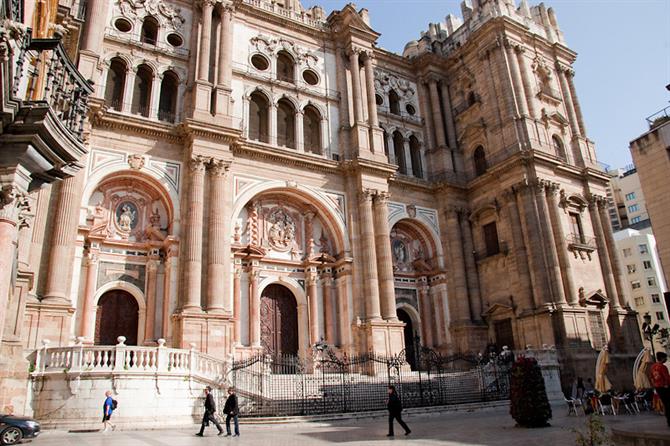
Malaga katedral
The greatest peculiarity of the cathedral is the absence of one of the towers. Due to a lack of funds and thus an inability to complete construction, the decision was taken to open the building before completion. The cathedral is now known locally as “La Manquita” or “the one-armed lady”.
Entry to the cathedral costs 5€, but is free on Sundays during mass.
11. La Plaza de la Constitución
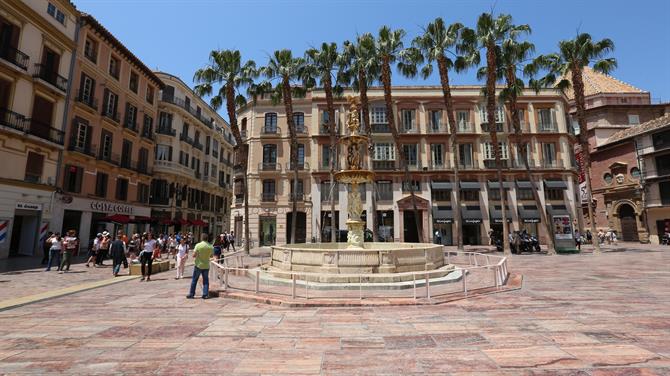
Plaza de la Constitución, Malaga
Ever since Arab reign, the Plaza de la Constitución has been the most important square in the city. Of course, in those distant days, people were not yet aware of the Constitution and the square was called Plaza de las Cuatro Calles (Square of Four Streets, since it was the meeting point of four main streets of the city) and later the Plaza Pública (Town Square). The present name was given in 1812, the year in which the Spanish Constitution was acquired.
Fuente de la Genova
Today, just like centuries ago, the square is full of life and serves as a meeting place, and the most important events of the city take place here. In the square there is a fountain; La fuente de Génova which is surrounded by nineteenth-century buildings, one of which is the emblematic shopping arcade; Pasaje Chinitas.
This place was extremely popular especially in the early twentieth century, when there was the famous El Café de Chinitas. This tiny theatre, which also served as a bar, cafe and sometimes public house has hosted the best flamenco dancers of the period, also, the famous poet Federico Garcia Lorca was a regular here and even mentioned the cafe in one of his poems.
Plaza de la Constitución is also home to another of Malaga’s unmissable landmarks: Café Central. Ordering coffee in Malaga is an art, so take a look at this specific system of measurement, which helps facilitate the selection of the perfect amount of coffee and milk for everyone’s taste.
Café Central of Malaga – nomenclature
The best holiday apartments in Malaga are close to the square, since it is the best starting point for exploring the city.
12. Calle Larios
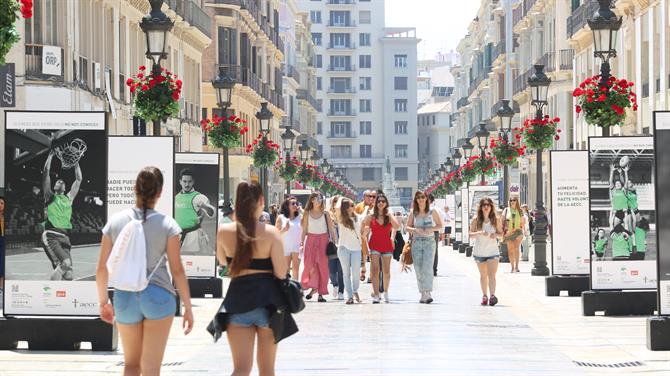
Calle Larios, Malaga
Calle Marqués de Larios is the main pedestrian street of the city, leading from the Alameda Principal to the Plaza de la Constitución. Today, it is one of the most expensive shopping streets in Spain, which is why so many well-known chain stores are located here. The majority of the road’s construction was financed by the Marquis Larios family, hence the name and the monument.
Ambiente en Calle Larios, Málaga
If something is happening in the city, you can be sure that it will be happening on Calle Larios. Year after year the processions of the Holy Week pass through Calle Larios. This street is also where concerts and performances are celebrated, during the seven days of the city’s biggest party: La Feria de Malaga.
Flamenco Dresses
Also, in April during Malaga’s film festival – The Festival de Malaga Cine en Español (FMECA), a huge red carpet is laid down along Calle Larios and in September the street is turned into a catwalk during the Pasarela Larios Málaga Fashion Week.
13. The Atarazanas Central Market

Mercado de Atarazanas, Malaga
The last point on our cycling tour is the central market – the Mercado de Atarazanas. This market is full of life from morning till noon. Here, buyers can find almost everything they need, including fresh fish from the bay, local vegetables, lots of pickled olives and delicious cheeses.
Ataranzas Market, Malaga
Take a look at the main gate, which is a reminder of the original Arab shipyard, which remained until the fourteenth century. Why is this shipyard located in the middle of the city? Until the eighteenth century the sea began at exactly the place where market is today. After the invasion of the Catholic Monarchs, the building has functioned as both a warehouse and a military hospital.
Mercado Atarazanas
In the mid-nineteenth century, the original building fell into disrepair and the city’s authorities decided that the building was to be taken down and in its place the urban market was constructed. The architect involved in the project retained one of the main arches, which today is located at the entrance.
Entry to the market is free.
From the Mercado to the Plaza de la Marina where we started the tour, takes about three minutes. The best way to spend the rest of your day is to try some of the best tapas in Malaga or enjoy a late drink at one of the outdoor terraces in the centre.
If this tour has made you curious to stay longer in a charming city apartment Malaga or a beautiful villa on the Costa del Sol, accommodation here is not a problem both in the city centre as well as the surrounding towns and villages.
Like this:
Like Loading...




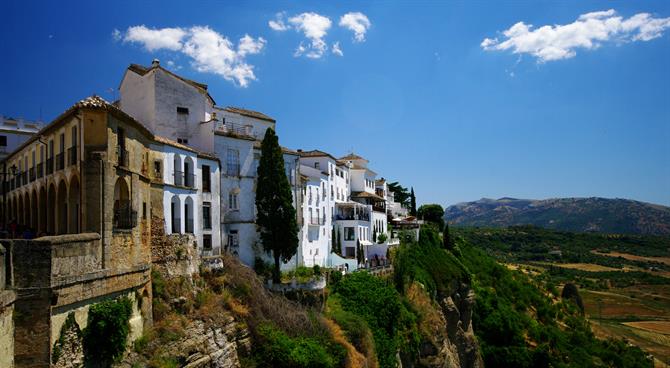

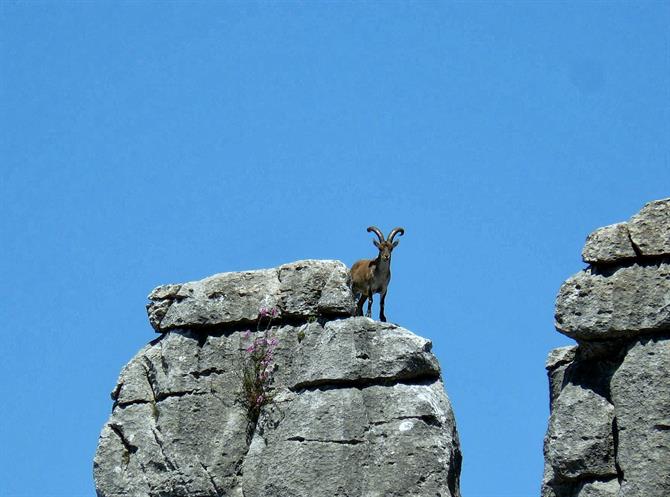

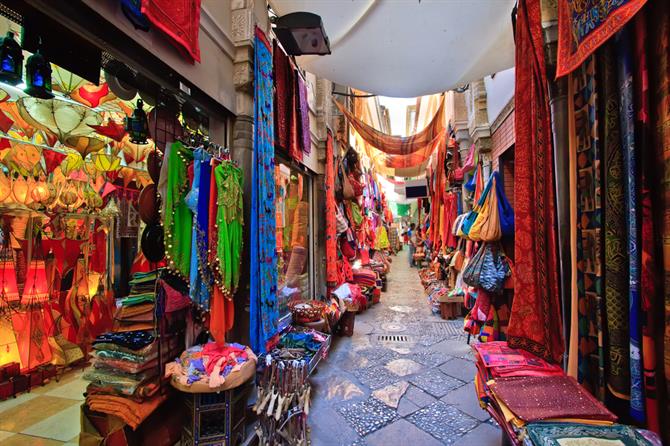




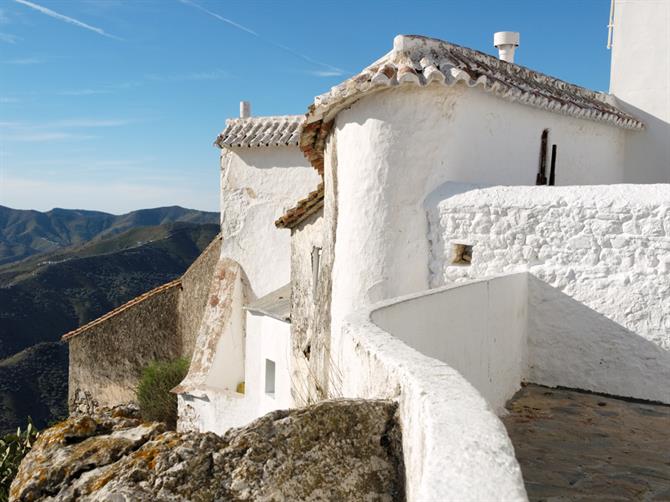


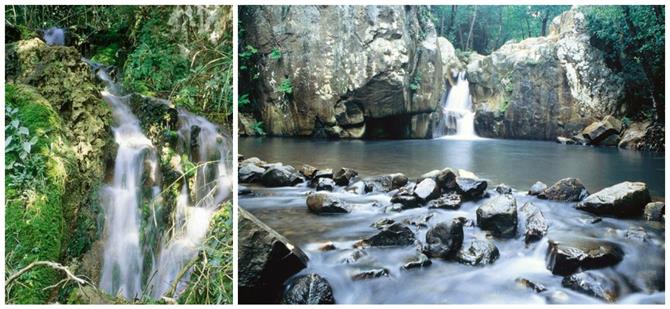

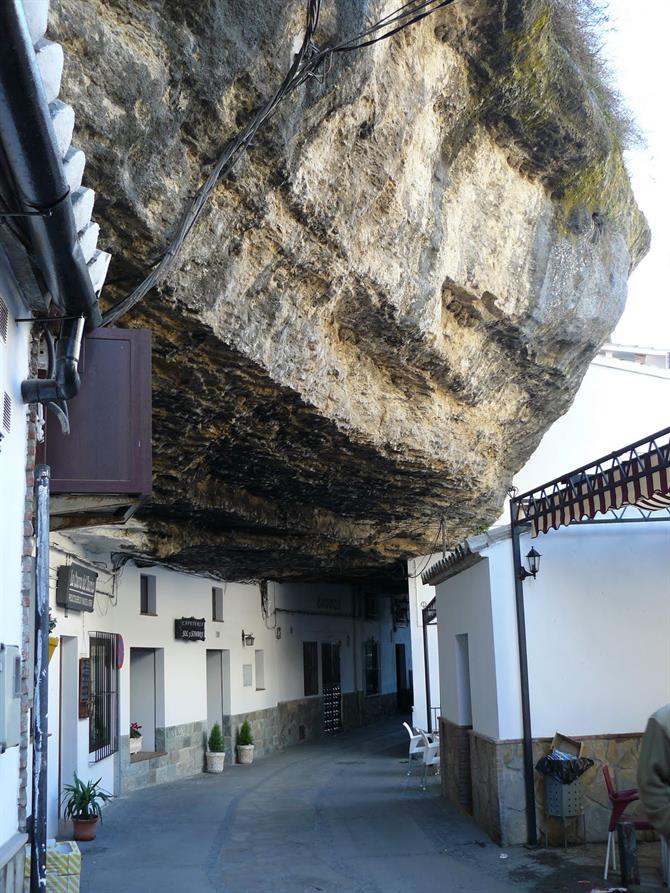

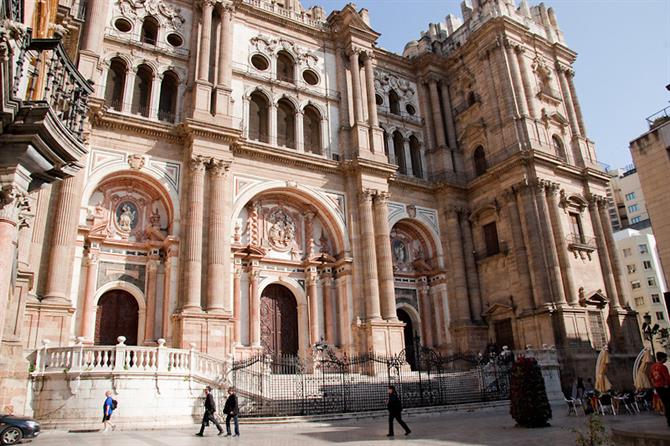


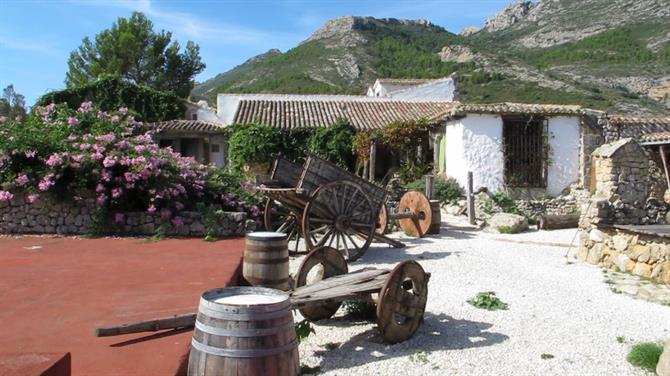

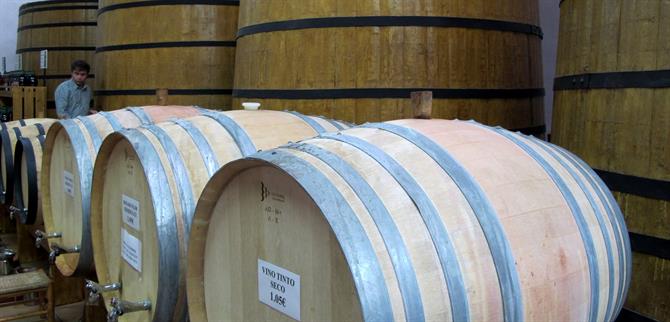
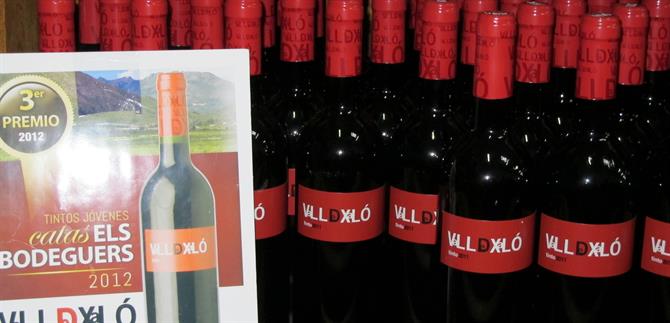



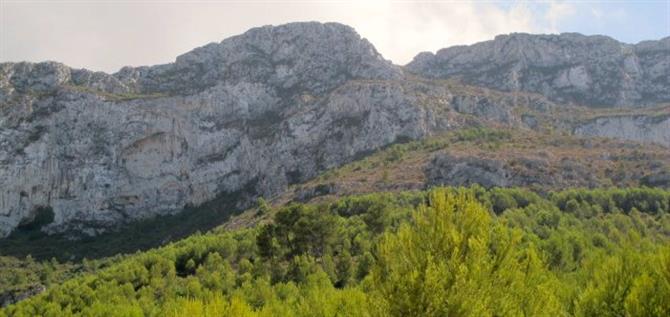

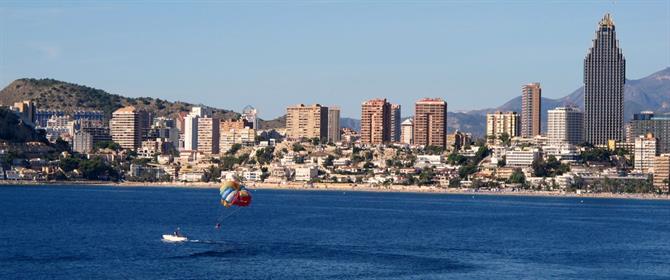






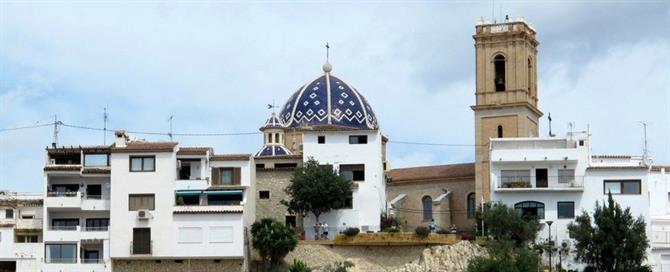
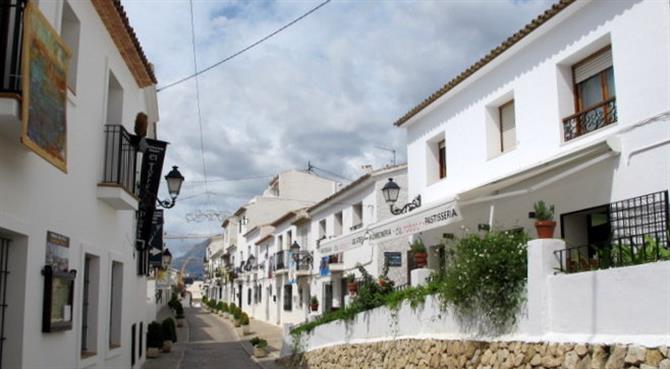


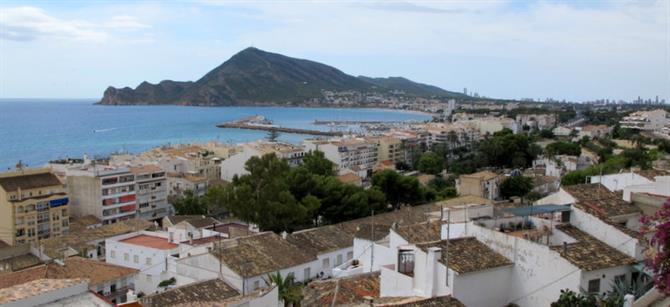






















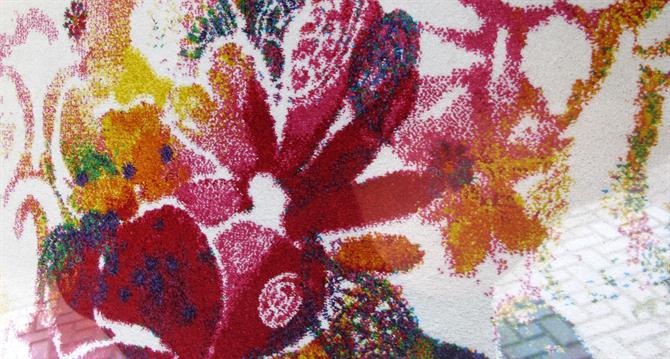
 The industry boomed at the beginning of the 20th century when the first power looms arrived.
The industry boomed at the beginning of the 20th century when the first power looms arrived.